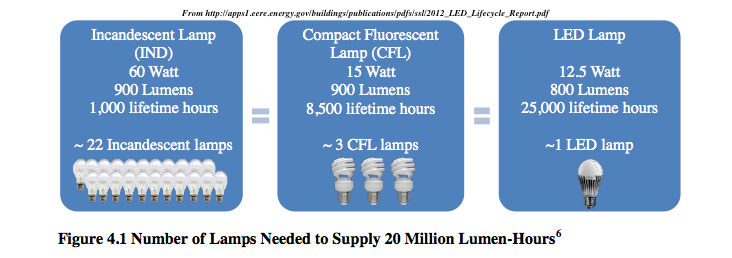Was rummaging around in a bunch of market research when I came across this item, from April 2013, which makes me shed many tears. Here’s the headline (go read the article if you want to cry, too):
Shelton Group Study Shows Decline in Energy-Efficient Product Purchases and Home Improvements.
I’m not weeping in angst because energy-saving habits have declined in the last three years. I’m weeping in frustration that the extent of what counts as ‘energy efficiency’ is so focused on minimal impact issues like replacing light bulbs and purchasing high-efficiency appliances, unplugging chargers and un-used appliances. Let’s look at the impact those ‘energy efficiency measures’ have on a relatively standard issue household.
I like the idea of LEDs and high-efficiency appliances and shutting off stuff you’re not using. Of course I do!!!!! So I’ve posted a bunch of info about energy efficient lighting options in the last few weeks. But those are band-aid solutions to real energy savings. It doesn’t change the amount of energy used in the house in a significant manner. It doesn’t change the financial load for the homeowner or renter. The telling part of the article is this statement: “and more than 40 percent of those who’ve actually done something are frustrated because they aren’t seeing the reduction they expected on their utility bills.”
No kidding.
In Canada, electronics and lighting account for 4 percent of overall household energy use. Appliances account for about 14 percent. Space and water heating account for 80 percent of the overall energy use. Eight-Oh. Four-fifths. Mostly All.
In the US, with a mixed bag of climate zones and space conditioning needs, appliances and lighting account for anywhere from 20 to 30 percent of the overall energy use. Space heating and cooling, and water heating accounts for 70 to 80 percent of the overall energy use. Still Mostly All, if you ask me.
What stands in the way of significant reductions in energy used for space conditioning and hot water usage? Like 50 to 90 percent reductions.
Off the top of my head…
- Not a silver bullet option offered at a big-box store
- Not easily packaged in a direct install program
- More expensive than a few cups of coffee
Simplistic, I know. The primary stumbling blocks are always cost and complexity. Low cost, simple measures are thought to be easier to accomplish. But are they? What if we took another look at measures that take the whole house into consideration and put big savings in small affordable phases? I’ll give some examples of what we’ve been looking at with our clients in the next few blog entries.
Now that I got you all excited about the savings to be had with lightbulb choices a couple of days ago, I think you need more details about lighting choices check out this blog entry from the Canadian Energy Efficiency Alliance (CEEA). Lots of info about everything you need to know about lightbulbs post-January 2014.
I posted this on FB the other day, but then got to thinking more about the comparison for cost-effectiveness. So being the wonk that I am, I had to go all OCD on it.
So to recap:
David Dodge at Green Energy Futures posted this infographic

which came from this report (and yes, I read the whole thing…so you wouldn’t have to).
Gordon Howell, PV Engineer in Edmonton, added in a FB comment: the lifetime energy consumed in operating these bulbs:
Incandescent: 1330kWh
CFL: 330kWh
LED: 310kWh
The LED consumes only 23% of the energy consumed by the incandescent.
So, that’s pretty impressive. How does that work out for cost to use/cost to buy?
At today’s prices from Lowes.ca:
Incandescent: standard issue 60W units 8-pack for $6.47 is most common in the online offering, but there was a 24 pack for 11.98 (really?!?!). So $6.50/8
CFL: 2 pack of 15W anywhere from $5.98 for base model to $14.98 for daylight. Lets go for the daylight version, so we’re happy in the winter (we’ll buy 2 packs, just in case).
LED: 12W Soft White $18.98 to $24.98. Middling cost: $22/bulb.
I pay about $0.136/kWh.
| Purchase | kWh Cost | Total | |
|---|---|---|---|
| Incandescent | $19.50 | $180.88 | $200.38 |
| CFL | $22.47 | $44.88 | $67.35 |
| LED | $22.00 | $42.16 | $64.16 |
Well. Are you sold on energy efficiency yet?
That’s a 68% reduction in overall costs between incandescent and LED lights.
I personally don’t like CFLs because of the unresolved issue of how to dispose of them safely (I know the mercury is minimal per bulb, but it’s not minimal when it’s hundreds of thousands of bulbs and they’re broken in landfills and leaking into groundwater — because we know that there are limited CFL recycling operations, and, just like the batteries that are stacking up in the garage, waiting to get taken to the hazardous waste drop off — the bulbs are likely to get pitched in the regular garbage in a spring cleaning frenzy). And yes, it’s true, the amount of coal-fired electricity that CFLs displace reduces mercury emissions from that major source. But if the LED bulbs are available and cost-competitive, why not use them instead?


Leave A Comment